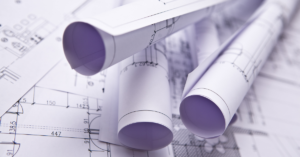What is optimization?
Optimization is a word that is relevant to all factory design architects while designing any project.
Merriam-Webster dictionary gives Optimization as an act, process, or methodology of making something (such as a design, system, or decision) as fully perfect, functional, or effective as possible
It involves considering all the probabilities with multiple constraints and criteria and taking an informed decision on which option to choose.
Optimization in a design could be of the following types:
- Space Optimization
- Cost Optimization
- Time Optimization
Space Optimization:
Industrial land is a precious commodity and optimization is essential. Any design process has to go through iterations to optimize the use of space, be it the office, workstations, production area or even the parking. Industrial architects and Engineers have to take well-informed and conscious decisions to ensure that space is optimized.
While optimizing space the following points have to be considered:
- Productivity: Space properly utilized results in enhancing productivity. Different tasks have different space requirements. These requirements are accommodated during the design stage.
- Cost: Cost impact of the multiple options while working out space utilization has to be considered
- An ambient atmosphere for the workforce is essential as it helps increase productivity
- The ethos of the company’s culture is one of the factors while allocating space.
- Expansion: Future expansion is a regular feature in industries. The design thought process should include future expansion.
- Operational Requirements: Any space planning has to be considered with an eye on operational requirements.
- Flexibility: the design should be able to provide for future flexibility in the process layout.
- Raw Material Storage & Finished Goods storage can be designed as per usage
Brainstorming sessions during the initial stages itself will result in an optimized space design. A properly optimized space brings about operational excellence in the facility. Vertical space in warehouses by planning high racks ensures space utilization to the optimum. A lot of research goes into the location of Break rooms, restrooms, especially in labor-intensive facilities. Utilities have to be placed with due consideration to the production process. Mezzanine floors should be used as per requirements.
Cost Optimization:
Cost Optimization is the act of getting maximum value for the money. Mere reduction in cost is not optimization. Checks and balances at all the stages of the project ensure that the value is maximized. As a result, from the start of the design stage till completion each stage helps in optimizing.
Value engineering by Architects and Engineers can help in optimizing the cost as it adds value to the project without any impact on the cost.
Often, operational and maintenance issues obliterate the benefits of the optimization. Consequent to these issues, lost man-hours due to maintenance schedules are a major concern in industries. This makes it imperative to design the process layout with an eye on the operational and maintenance perspectives.
Time Optimization:
Time optimization in an industrial project is essential. A project starts with fixed project goals, one of them being the start of production. Planning and implementation of the project are integral to any industrial infrastructure project. A well-planned and implemented project achieves the project goals. The onus on achieving this goal lies with the factory architect.
Time optimization is optimizing the time for the process, design, procurement, and implementation. Preparing a proper schedule for a project is the topmost priority. Every stage in a project has its own time frame. However, in fast-track projects, multiple steps run concurrently due to which the distinction between stages gets blurred.














